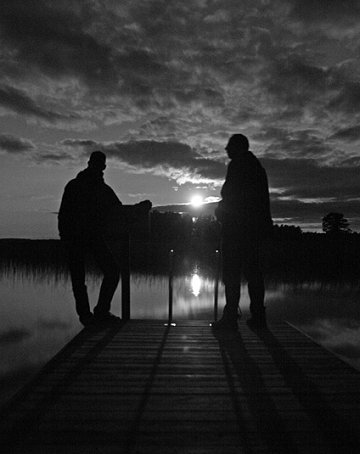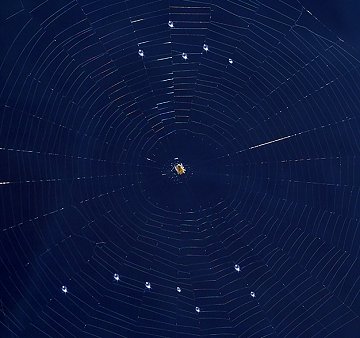| AURORA ALERT: Earth is entering a solar wind stream and this is causing geomagnetic activity around the Arctic Circle. "The auroras were active tonight in Tromso, Norway, in spite of twilight and bright moonlight," reports Bjorn Jorgensen: photos. Sky watchers from Alaska to Scandinavia should be alert for auroras. HARVEST MOON: Tonight's full Moon has a special name--the Harvest Moon. It's the full moon closest to the northern autumnal equinox (Sept. 22). In years past, farmers depended on the light of the Harvest Moon to gather ripening crops late into the night. Post-Edison, we appreciate it mainly for its beauty: 
P-M Hedén of Hedesunda, Sweden, took the picture last night using his Canon 450D. "It was a lovely sight." When the Moon is Harvest-bright, as it is tonight, it often lights up ice crystals and water droplets in high clouds, producing luminous haloes and coronas. Keep an eye out for those beauties, too! more images: from Daisuke Tomiyasu of Higashinada, Kobe, Japan; from Bob King of Duluth, Minnesota; from Frank Ryan Jr of Co. Clare, Ireland; from Mustafa Erol of Antalya, Turkey; from Tamas Ladanyi of Hegyestu, Hungary; from Mike Borman of Evansville, Indiana; from Todd Hargis of Horseshoe Bay, Texas; ARACHNIDA MAJOR: In Trieste, Italy, photographer Marco Fulle has discovered what holds the constellations in place. It is a protenaceous silk material, elastic, sticky, and with a tensile strength greater than steel. Most people call it "spider's web": 
"On the wet morning of Sept. 9th, I happened to see a perfect spider's web. Fascinated by the geometry, I applied a few dewdrops to obtain a likeness of our northern polar sky. With Cassiopaeia on one side and the Big Dipper on the other, the spider was at the center of things, and she seemed very happy with that result!" Strange, but true: Spiders are a popular target for astrophotographers. Browse the images from Joao Gregorio of Atalaia, Portugal; from Lois Reinert of Tracy, Minnesota; from Maurice Gavin of London, England; from Ed Kreminski of Westerville, Ohio; from Jan Hemmer of Sint Maarten, Noordholland, the Netherlands; from Denis Joye of Boulogne, France.
Sept. 2008 Aurora Gallery
[Aurora Alerts] [Night Sky Cameras] | 
